Exploring the Allure of Creepy Tarot Decks
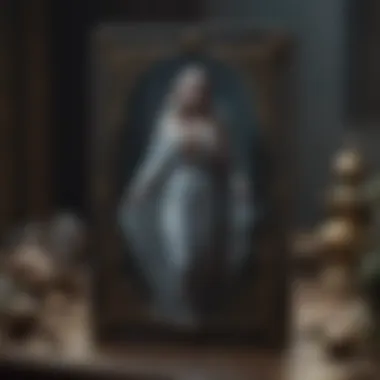
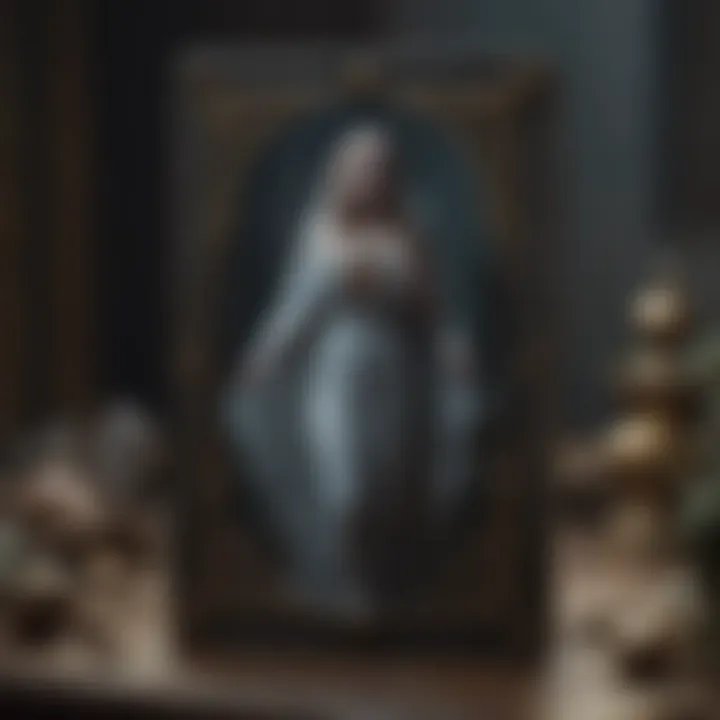
Intro
In the back corners of the tarot world, where subtle light meets shadowy artistry, dwell the creepy tarot decks that spark a fascination alongside a touch of apprehension. These aren’t your everyday decks sprinkled with cheerful imagery; rather, they stand as peculiar reflections of the human psyche, weaving tales of fear, mystery, and cultural narratives that strike at our deeper sensibilities.
Infusing traditional motifs with unsettling characteristics, these decks unfold stories that provoke thought and contemplation. As we navigate through their history and unique illustrations, we'll also examine the tremors of psychological impact they have on readers and querents alike. It’s like swirling water disturbs the stillness—the captivating tension they create offers something more profound.
In the following sections, we will peel back layers of meaning and aesthetic to explore not just the decks themselves, but also the rich currents that run beneath the surface. Completing the picture requires understanding how these unsettling images serve both as tools for divination and reflections of wider cultural dialogues. Welcome to a world that meets at the nexus of terror and awe, one intricate card at a time.
Understanding Tarot as a Conceptual Framework
Tarot is more than just a method of fortune-telling; it’s a rich tapestry of symbols and archetypes that provides deep insights into the human psyche. Understanding tarot as a conceptual framework opens up avenues for personal reflection, emotional exploration, and connecting with the universe on a broader scale. By delving into its structure and history, practitioners can unravel layers of meaning that traditional decks may gloss over.
The significance of this concept lies in how tarot serves as a mirror, reflecting our innermost thoughts and feelings. It invites a dialogue with the self, prompting users to confront fears, desires, and hidden motivations. In the context of creepy tarot decks, this aspect intensifies, often presenting imagery that is unsettling yet captivating, forcing each reader to confront various aspects of their reality.
The Historical Roots of Tarot
The origins of tarot can be traced back to the 15th century, with early decks used for playing games rather than divination. The shift from gaming to oracle can be attributed to mystical traditions that emerged during the Renaissance, which intertwined tarot with astrology and alchemy. This period sparked a burgeoning interest in the occult, paving the way for the rich symbolism we find in tarot today and squinting into the darker aspects of existence.
The evolution of tarot reflects shifts in society's understanding of the supernatural. Creepy decks often draw on historical narratives and hidden lore, infusing depth and context that contemporary users might find both alarming and fascinating. Thus, historical roots are key to appreciating how and why certain imagery resonates on a psychological level today.
The Structure of a Tarot Deck
A traditional tarot deck consists of 78 cards divided into two main categories: the Major Arcana and the Minor Arcana. Each has its own role and significance within a reading, contributing to the overall narrative presented by the reader.
Major Arcana
The Major Arcana comprises 22 cards, each representing significant life lessons, themes, and spiritual challenges. Cards like The Tower or The Death card evoke strong emotional reactions. Their impact is profound, as they often symbolize pivotal moments in the querent’s life or major transformations. This is why they hold great importance in the context of creepy tarot decks—these images not only challenge the reader's perception but also instigate deep self-reflection and inquiry.
What makes the Major Arcana particularly appealing for this article is its ability to present a stark contrast to more mundane aspects of life. The unique feature of the Major Arcana lies in the narrative journey it takes you on, from The Fool's naive beginnings through to The World’s completion. Readers often find that these cards prompt a visceral response, raising questions about destiny and inner desires.
Minor Arcana
The Minor Arcana, on the other hand, consists of 56 cards divided into four suits: Cups, Swords, Pentacles, and Wands. Each suit explores different facets of everyday life, offering insights into emotional, intellectual, physical, and spiritual pursuits. Unlike the dramatic Major Arcana, the Minor Arcana focuses on day-to-day experiences, yet its vivid imagery can still be hauntingly beautiful.
Their particular appeal in the realm of creepy decks revolves around themes of discomfort found in the mundane—highlighting the frailty of existence. For instance, the Three of Swords can evoke personal heartbreak while simultaneously reminding us of the darker nuances of relationships. The symbolic understanding of these cards provides a balanced narrative, lending context to the overtly macabre material often found in eerie decks.
In summary, while the Major Arcana might represent the larger cosmic forces at play, the Minor Arcana roots those cosmic narratives in the gritty reality of everyday life, enriching the reading experience and weaving a complex web of meaning that is both relatable and profound.
The Allure of Creepy Imagery
When we think about tarot, the imagery often conjured up is serene landscapes, gentle figures, and the metaphysical realm of intuition. However, there exists a darker, more haunting branch of tarot that captivates both curiosity and trepidation—creepy tarot decks. This allure is not merely an aesthetic choice; it taps into deep psychological phenomena, enriching the reader's experience through unsettling imagery that fosters engagement, exploration, and self-reflection.
Creepy imagery serves several purposes. It dares the viewer to confront their fears and delve into the darker realms of human experience, allowing for a fuller understanding of one's self and the world around them. In this article, we will explore the psychological responses elicited by such imagery, cultural reflections apparent in the art, and how these layers of meaning deepen the tarot reading experience.
Psychological Responses to Creepy Art
Fear and Fascination
The concept of fear and fascination is central to the appeal of creepy tarot decks. It hinges on the idea that human beings are naturally drawn to the unknown and the taboo. There is something inherently captivating about imagery that evokes a sense of dread yet simultaneously encourages intrigue.
In tarot readings, this dual response can enhance the experience. A reader might find that they’re more inclined to engage with the cards depicting unsettling themes, thus entering a deeper state of reflection. This characteristic in creepy tarot is what makes it a potent tool for self-exploration, as it challenges readers to confront emotions they may want to suppress.
Unique to creepy decks is their ability to disrupt the comfort zone. This can be an advantage in cases where intuition needs a jolt to stimulate insights that would not emerge from more traditional decks.
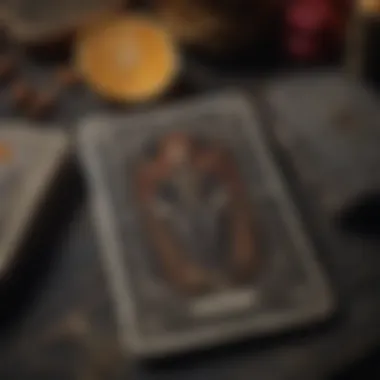
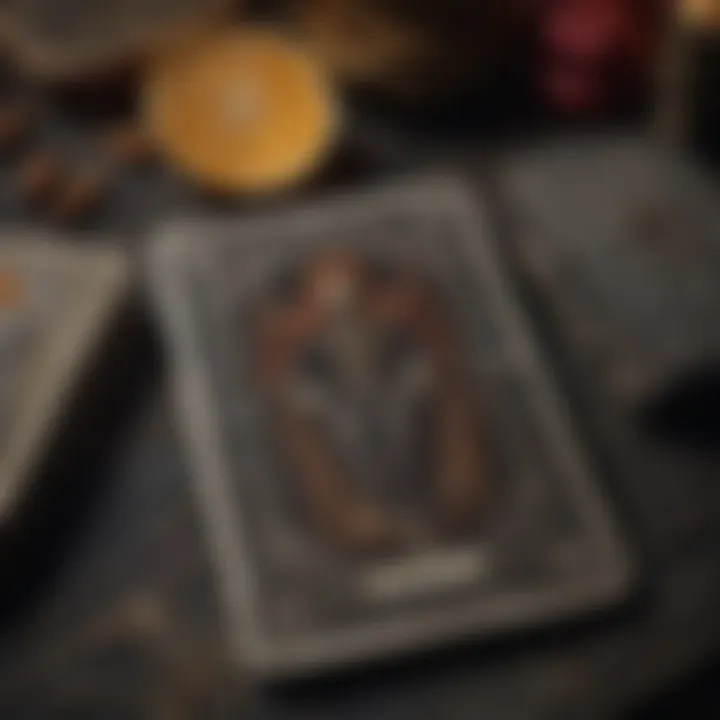
Symbolism of Dread
Closely aligned with the previous concept is the symbolism of dread. Creepy tarot art often utilizes symbols that evoke anxiety, such as shadows, grotesque figures, and decay. These symbols convey deeper meanings, encouraging the reader to reflect on the cycles of life, death, and regeneration.
The use of dread as a thematic choice is particularly impactful. It instills a sense of urgency that can lead to profound realizations. Decks that incorporate potent symbols of fear provide a unique landscape for introspection, allowing the reader to navigate through personal darkness for growth and enlightenment.
Though it can be unsettling, the symbolism of dread can guide readers toward important pathways in their lives, highlighting areas needing attention or transformation.
Cultural Reflections in Tarot Art
Explore Horror Tropes
Within creepy tarot, one finds a rich vein of horror tropes drawn from literature and folklore. Using elements such as duality, the grotesque, and the uncanny, these decks bring cultural narratives to life. Horror, an age-old genre, effectively communicates discomfort and often pushes boundaries, making it a valuable lens for tarot artistry.
The benefit of horror tropes lies in their resonance with the human experience. Familiar imagery linked to dread can ignite recognition and understanding, enhancing the reading experience. Readers might find themselves transported through cultural references that echo their fears and joys—strengthening the connection between the tarot and the querent.
Connection to Folklore
Another significant aspect is the connection to folklore within creepy tarot decks. Folklore, often imbued with moral lessons, expresses collective fears and societal norms. Through these visual narrations, readers are invited to explore their cultural heritage—connecting with stories of spirits, ghosts, and deeper mysteries woven through history.
The unique advantage of integrating folklore is vast; it allows tarot readings to segue into discussions about cultural identity and personal belief systems. Readers can uncover layers of meaning, revealing how age-old tales continue to inform modern realities and fears. This connection not only enriches the reading but also provides a platform for broader discourse.
Creepy tarot decks are more than mere tools for divination; they encapsulate complex emotions and cultural narratives that demand engagement.
In summary, the allure of creepy imagery in tarot serves as an access point to deeper psychological and cultural dialogues. It challenges the reader to face dread while simultaneously exploring rich histories and narratives. Whether one views these decks as mere aesthetic choices or as profound sources of insight, their impact can reverberate well beyond the simple action of card reading.
Notable Creepy Tarot Decks
Diving into the obscure and often unsettling world of creepy tarot decks reveals not just artistic flourishes, but also a unique layer of meaning that resonates with readers on many levels. These decks capture the imagination and stir the soul, inviting practitioners to explore their darkness and depth. The importance of focusing specifically on notable creepy tarot decks lies in understanding how they embody both traditional tarot wisdom and the unsettling aesthetic that often accompanies the supernatural. Each deck serves as a mirror reflecting the fears, desires, and cultural narratives of its time, making the study of these decks more than just an artistic exploration; it becomes a venture into the psychology of their users.
The Bonefire Tarot
Artistic Style
The Bonefire Tarot distinguishes itself through a visceral artistic style that evokes a sense of raw emotion and darkness. This deck employs a striking color palette of deep reds and blacks, creating an atmosphere that feels almost otherworldly. One key characteristic of this style is its use of symbolism; every image is steeped in layers of meaning. This artistic approach attracts those who resonate with its themes of loss and spirit, making the deck a popular choice for conversations about mortality and transformation. A unique feature of the Bonefire Tarot is the way each card tells a narrative through its imagery. The advantage of such a style lies in its ability to draw readers in, making their tarot experience more personal and profound.
Impact on Readings
The impact on readings with the Bonefire Tarot is profound, as its haunting imagery often evokes strong emotional responses from both the reader and querent. This deck’s key characteristic is its ability to challenge readers, forcing them to confront uncomfortable truths or hidden fears. The result is an often enlightening—if not slightly unsettling—experience that can lead to deeper insights. A unique feature of these readings is how the visual drama of each card facilitates connection and dialogue around difficult topics. Although some might find the intense imagery a bit much, its strengths shine through in fostering honest reflection and conversation.
The Tarot of the Cat People
Conceptual Themes
The Tarot of the Cat People is notable for its whimsical yet eerie conceptual themes that blend feline mystique with an otherworldly vibe. The imagery brings feline symbolism to the forefront, intertwining it with human fears and desires, leading to an exploration that feels familiar yet strange. This deck affirms the value of blending light and darkness, allowing for a more comprehensive view of the human psyche. Its conceptual heart lies in the exploration of duality, making it an appealing choice for those looking to dive into the juxtaposition of inner strength and vulnerability. The unique feature here is the ever-present feline spirit, which serves to remind readers of their own instincts, abilites, and the depths they can explore.
Legacy and Influence
The legacy and influence of the Tarot of the Cat People can be felt throughout contemporary tarot practice, inspiring numerous other decks that follow its lead in utilizing nontraditional themes. Its key characteristic is its ability to combine fantasy and reality, appealing to an audience that appreciates both whimsy and eeriness. This deck’s unique feature, the incorporation of cat symbolism, allows for an exploration of themes such as independence and intuition in a new light. By engaging with such rich, fantastical imagery, readers are encouraged to reflect on their own characteristics as they interpret the cards, creating a dialogue that's as insightful as it is imaginative.
The Deviant Moon Tarot
Visual Elements
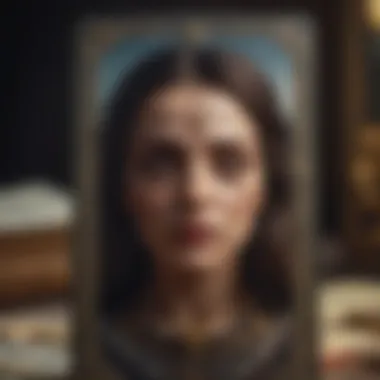
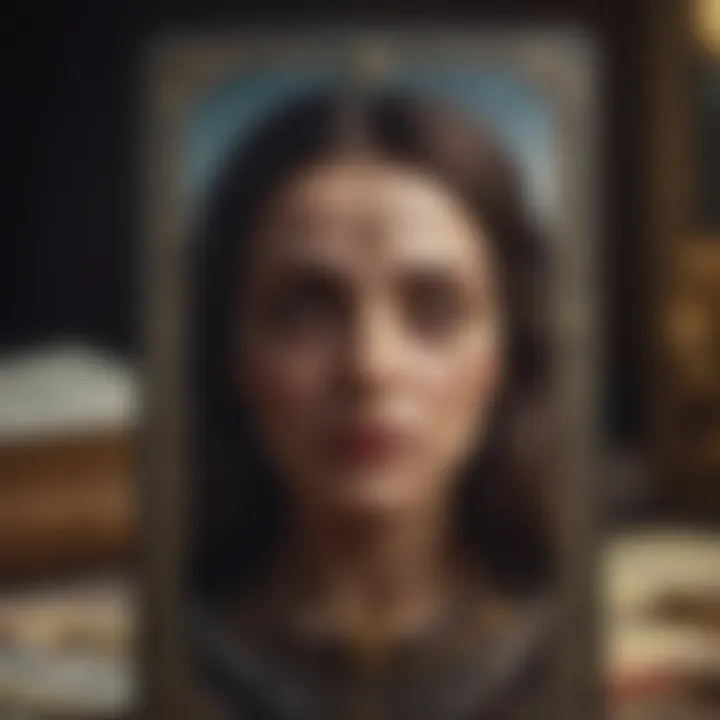
The Deviant Moon Tarot stands out with its striking visual elements, often featuring surreal landscapes and dreamlike figures that challenge traditional interpretations. The key characteristic of this deck is its strong emphasis on shadow and light, creating a balance that feels both disturbing and entrancing. Its haunting visuals resonate with those who seek to understand their own darker impulses. An important unique feature of the visual elements in this deck is the combination of various artistic styles, giving each card a distinct narrative while ensuring they connect cohesively as a whole. While some may find the surrealist approach jars against their expectations of tarot, many appreciate its openness to interpretation—allowing for rich and diverse readings.
User Experiences
User experiences with the Deviant Moon Tarot often highlight its ability to evoke a wide range of feelings. Its key characteristic lies in how it fosters creativity in interpretation, often leading readers to very personal insights. Users frequently cite the deck’s power to inspire and accompany them through difficult life scenarios, providing a comforting presence amid uncertainty. Furthermore, the unique feature of myriad perspectives presented in each card allows users to explore and express their own relationship with fear and discomfort—offering a space to confront what they often try to avoid. Although it might not be everyone’s cup of tea, its allure rests in the space it creates for deep introspection and emotional connection.
Benefits of Using Creepy Tarot Decks
In the realm of tarot, creepy decks often evoke emotions that run deeper than mere fascination. Their unique blend of eerie aesthetics allows readers to explore the less comfortable aspects of human experience. This exploration is not just whimsical; it has practical implications in personal development and intuitive practices. Using these unsettling decks leads to a more profound discovery of self and the world around us.
Enhanced Intuition
Emotional Engagement
Delving into emotional engagement, one finds that the unsettling imagery of creepy tarot decks stirs something within readers. It's not merely about understanding the cards contextually but feeling the weight of their symbolism. Cards adorned with dark themes can provoke a visceral, emotional response, plunging the reader into their own psyche. This immersion often leads to heightened intuition, allowing insights to surface that might remain buried with more conventional decks. Readers may feel a kinship with characters depicted, fostering a sense of connection that is hard to shake off.
However, this emotional engagement may also present challenges. If a reader is too affected by the fear those cards might summon, it could complicate their interpretations. But, conversely, grappling with those emotions can facilitate growth, driving individuals to confront their fears or uncertainties head on.
Impulse to Reflect
The impulse to reflect is another notable aspect of creepy tarot decks. These decks push readers to confront difficult truths, leading to a natural tendency to reflect upon one’s life and choices. Unlike traditional decks that might gloss over issues, the eerie visuals compel forthright evaluations of one’s mental, emotional, and spiritual state. Readers may find themselves pondering their insecurities or unresolved issues long after the reading has ended.
This compulsive reflection is particularly essential in modern times, where distraction is rife. Creepy tarot decks cut through the noise, demanding attention. Yet, the challenge lies in balancing this reflection with self-compassion—excessive focus might spiral into negativity if not managed wisely.
Facilitating Deep Conversations
Challenging Norms
When it comes to challenging norms, creepy tarot decks serve as catalysts for discussions that most would shy away from. The unsettling themes often shake the traditional foundations of tarot practice, breaking barriers that keep deeper dialogues at bay. This process encourages readers to question not only themselves but also the societal norms surrounding topics like death, fear, and existential crises.
Applying this to real-life scenarios, a reading with a creepy deck can foster an atmosphere where taboo subjects are easier to broach. But it can also coax discomfort to the surface—something that makes space for raw, unfiltered conversations. For some, this process can be incredibly liberating, whereas others may find it daunting to navigate.
Encouraging Vulnerability
Finally, encouraging vulnerability is where creepy tarot decks show their true colors. The stark, sometimes unsettling imagery invites individuals to shed their armor and be open about their feelings. This approach can help create environments where people feel secure enough to share personal truths. When dealing with difficult subjects, such decks can act as a bridge, connecting the reader’s and querent’s experiences.
The unique invitation to vulnerability holds potential benefits—both in personal relationships and professional settings. However, it is essential to proceed with caution, as not everyone is ready to fully engage with these haunting themes.
"The exploration of shadow self is a necessary journey, often illuminated by the creepy tarot decks we embrace."
Creepy tarot decks, while undeniably striking, offer far more than mere shock value. They serve as profound tools for growth, pushing boundaries while encouraging personal exploration and deep conversations. Each reading is a journey into the unknown, where intuition thrives amidst the shadows.
Creepy Decks in Contemporary Practices
Creepy tarot decks have found their way into modern practices, allowing both enthusiasts and newcomers to delve into the esoteric with an air of mystery. As these decks resonate with themes that evoke discomfort and intrigue, their place in contemporary tarot readings deserves thoughtful exploration. This section will discuss how creepy imagery interacts with popular culture and personal tarot practices, thus enriching the spiritual landscape.
Creepy Decks in Pop Culture
Tarot in Films
The presentation of tarot in films has always been an interesting aspect of its portrayal. Directors and writers often utilize the symbolism inherent in tarot to push narrative boundaries. It’s not just about divination; it becomes a plot device that can either allure or terrify. A striking example is the film "The Ninth Gate", where tarot serves as a key element in deciphering hidden truths.
"Tarot can act as a lens through which we view reality, revealing the connections unseen."
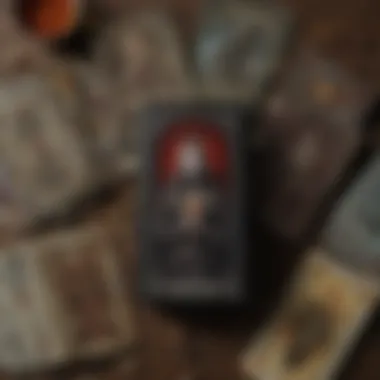
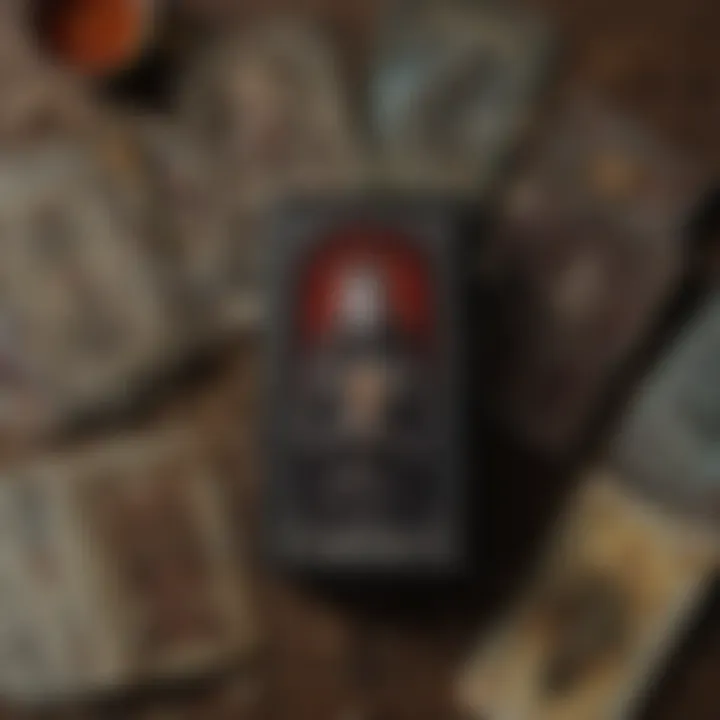
The aesthetic choices in these films frequently feature visually striking cards, each telling a story of their own. Such portrayals highlight not just the mystique of the tarot but also its potential to challenge perceptions. However, some films could trivialize tarot, reducing its complexity into mere tropes. The balance between respect for the subject and entertainment value remains a delicate dance.
Influence on Literature
In literature, creepy tarot decks weave into stories as metaphors for fate and the unknown. Writers leverage the deep symbolism found in tarot to deepen character arcs or foreshadow events. Notable works such as "The Age of Darkness" reference the tarot as an allegory for the characters' destinies.
The unique feature here lies in the narrative structure; authors often use the cards to hint at underlying themes of chaos and control. This can create a thrilling dynamic between the reader and the text. However, an over-reliance on tarot for plot development can sometimes dilute the depth of storytelling.
Adapting Creepy Decks for Personal Use
For practitioners wanting to make creepy tarot decks a personal staple, adapting them is key. This process not only personalizes readings but can drastically alter how one interacts with the cards.
Creating Custom Spreads
Creating custom spreads specifically designed for creepy decks opens a world of tailored insight. The beauty of this adaptation is its versatility; practitioners can devise spreads that delve into fears, existential questions, or reflections on personal shadows. It turns the reading into a deeply personal experience.
The challenge, however, lies in balancing complexity and clarity. While it's tempting to craft intricate spreads, maintaining simplicity is crucial to ensure comprehension during readings. Overall, the unique aspect of these custom spreads is their ability to channel deeply held fears and desires, transforming uncertainty into a path of self-discovery.
Selecting Arrival Rituals
Arrival rituals are another aspect where personal practice can take a creative turn. Selecting a specific ritual upon receiving a creepy deck can set the tone for future readings. Rites can include cleansing the cards through smoke, water, or even personal incantations that align with one’s intuitive understanding of the deck's energy.
Many tarot readers emphasize the connection established between the reader and their tools through these rituals. However, one must be cautious; overly complex rituals can become daunting rather than illuminating. The overall advantage here is enhancing one's relationship with the cards, making the experience of using a creepy deck all the more intimate.
In summary, the blend of creepy tarot decks with contemporary practices weaves a rich tapestry of exploration and understanding. Through pop culture references and personal adaptations, these decks don’t just exist as tools; they resonate as cultural artifacts that narrate stories of fear, fascination, and ultimately, self-awareness.
The Future of Creepy Tarot Decks
The evolving landscape of tarot practices incorporates various societal and technological shifts, paving the way for the future of creepy tarot decks. As seekers of the arcane and the bizarre become increasingly drawn to images that blend eeriness with aesthetics, understanding these advancing trends becomes essential. By embracing new mediums and styles, both seasoned practitioners and novices are likely to find themselves enriched by a deeper engagement with their craft.
Emerging Trends
Digital Tarot Experiences
In a world dominated by screens, digital tarot experiences are carving a niche. This trend harnesses technology, allowing users to engage with tarot in a convenient virtual format. The key characteristic here is accessibility; readings can be done anywhere, from smartphones to tablets. Users can shuffle their virtual deck with a flick of the finger, receiving instant insights into their querents' energy without the need for traditional tools.
Having a digital tarot platform isn’t just about convenience; it’s also about diverse representation. Many digital tarot experiences tailor their offerings to include various artistic styles, including those darker, creepier decks that resonate with specific audiences. However, some argue that this shift from physical to digital can dilute the tactile experience that many value in tarot reading. The unique feature—often gamified elements like daily pulls or interactive stories—engages users but may lack the depth of more traditional approaches.
Sustainable Creation Practices
With conscious consumption on the rise, sustainable creation practices are becoming increasingly relevant. This shift reflects a growing awareness of environmental impact within the tarot community. The driving characteristic behind this trend is the use of eco-friendly materials and ethical sourcing, setting a standard for new decks. Many modern tarot designs embrace recycled papers and vegetable-based inks, making them an appealing choice for the environmentally-conscious.
While the long-term benefits of sustainable practices contribute positively to both the environment and the tarot community, one must consider the trade-offs. Costs can be higher, leading some creators to struggle with pricing their decks competitively. Nonetheless, the unique feature of sustainable tarot practices lies in their appeal to a broader audience, drawing in those who prioritize sustainability, making these decks not just mystical tools but also eco-friendly statements.
Exploring New Aesthetics
Minimalism Meets Macabre
Exploring the intersection of minimalism and macabre provides a fresh lens through which to view creepy tarot decks. At its core, this aesthetic simplifies complex imagery while retaining an unsettling edge, leading to powerful visual storytelling. Minimalism allows for an emphasis on negative space and stark contrasts, which can enhance the feelings of eeriness.
The combination of these styles appears to resonate with contemporary audiences, seeking clarity amidst chaos. This unique feature encourages deeper personal interpretation, making readings more dynamic and reflective of the user’s emotional state. However, such stark simplicity might alienate those accustomed to the rich detail and intricate symbolism typically found within tarot cards.
Transcending Conventional Styles
The future of creepy tarot decks also lies in transcending traditional artistic styles. This movement challenges accepted paradigms, embracing influences from contemporary art movements and subcultures. The result can be an eclectic mix that captivates and unsettles, inviting the reader to explore meanings beyond the obvious.
A notable characteristic of this trend is the ability to fuse elements like surrealism and dark fantasy, producing decks that feel fresh yet deeply introspective. Such decks invite users to navigate complex emotions and themes that might be overlooked in conventional interpretations. The risk, however, could lie in alienating users who prefer more straightforward narratives. Despite this, the unique feature of this approach serves as a creative spark, stirring discussions on the nature of fear and fascination within both readings and artistry.
"As we evolve, tarot must transform with us, for the magnetic pull of the creepy can unveil truths hidden beneath surface realities."
These emerging trends and new aesthetics promise to keep the realm of creepy tarot decks vibrant and ever-evolving. As practitioners and enthusiasts look to the future, they'll find a rich tapestry of influences, styles, and experiences awaiting to be explored.







